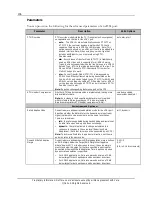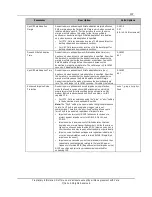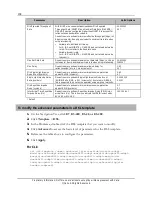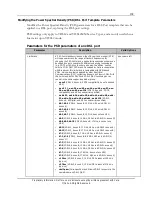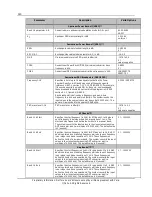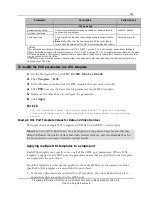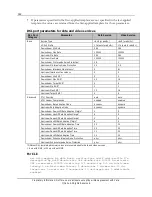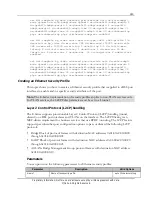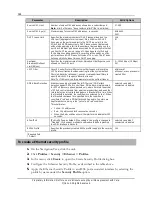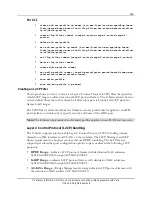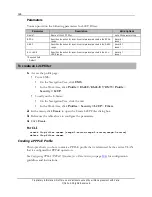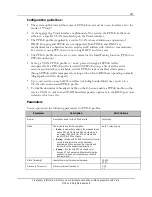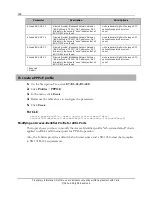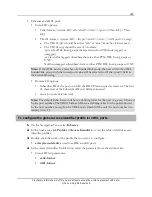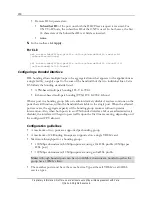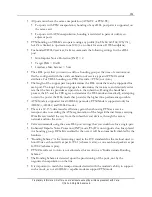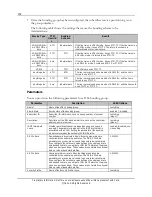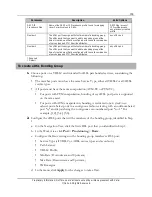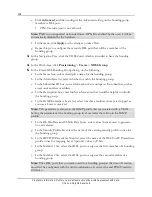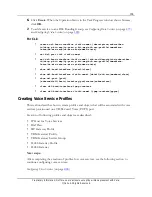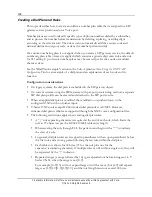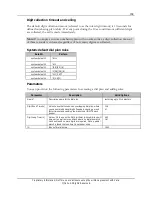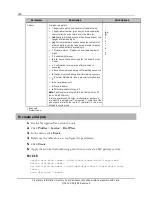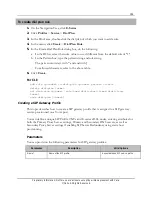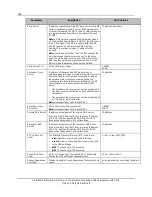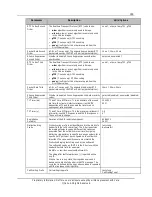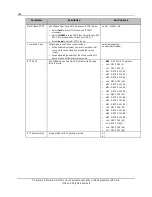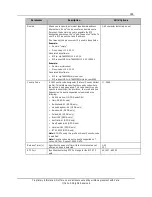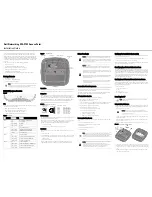
150
Proprietary Information: Not for use or disclosure except by written agreement with Calix.
© Calix. All Rights Reserved.
Remote ID list parameters:
Subscriber ID
of the port on which the DHCP lease request is received. For
ONT VoIP hosts, the subscriber ID of the ONT is used. In both cases, the first
63 characters of the Subscriber ID text field are inserted.
none
5.
In the toolbar, click
Apply
.
For CLI:
set access-identifier-profile <eth-system-default> remote-id
[subscriber-id|none]
set access-identifier-profile <eth-system-default> circuit-id
[calix-format|tr101-format]
Configuring a Bonded Interface
DSL bonding allows multiple loops to be aggregated into what appears to the applications as
a single facility, roughly equal to the sum of the bandwidth of the two individual lines. Calix
E5 follows the bonding standards listed:
ATM-based multi-pair bonding ITU-T G.998.1
Ethernet-based multi-pair bonding (PTM) ITU G.998.2 G.bond
When a port in a bonding group fails or is administratively disabled, services continue on the
ports that still function, within the bandwidth available to the single port. When the affected
port recovers, the aggregate capacity of the bonding group resumes without operator
intervention. Also, when both ports in an ATM-bonded interface fail or are administratively
disabled, the interface will begin to pass traffic upon the first line recovering, depending on if
the configured CPU allows it.
Configuration guidelines
A maximum of two ports are supported per bonding group.
A maximum of 24 Bonding Groups are supported on a single VDSL2 card.
Maximum throughput for a bonding group:
100 Mbps downstream/60 Mbps upstream using a 12a DSL profile (20 Mbps per
DSL port)
100 Mbps downstream/12 Mbps upstream using an 8a DSL profile
Note:
Although bonded ports can be up to 60Mb/s downstream, bonded together the
group has a 100Mb/s limit.
The member ports must have the same Service Type, either all VDSL2 or all ADSL
service types.

